في مجال المعدات الصيدلانية أصبح الفولاذ المقاوم للصدأ مادةً لا غنى عنها لمقاومته الممتازة للتآكل، وخواصه الميكانيكية الجيدة، وسهولة تنظيفه وصيانته. ومع ذلك، في ظل وجود مجموعة واسعة من معدات منتجات الفولاذ المقاوم للصدأ في السوق، أصبح تحديد نوعه وجودته بدقة، لضمان التشغيل الآمن والفعال للمعدات الصيدلانية، مهارةً أساسيةً يجب على كل مشترٍ إتقانها. ستناقش هذه الورقة تصنيف الفولاذ المقاوم للصدأ وخصائصه، وتقدم ثلاث طرق عملية لتحديده بالتفصيل، وتحلل مزاياه وعيوبه ومجالات تطبيقه في المعدات الصيدلانية.
الفولاذ المقاوم للصدأ، كما يوحي اسمه، هو نوع من الفولاذ السبائكي المقاوم للصدأ، ويتكون أساسًا من الحديد والكروم والنيكل وعناصر أخرى. ووفقًا لاختلاف بنيته وتركيبه الكيميائي، يُصنف الفولاذ المقاوم للصدأ إلى: الفولاذ الأوستنيتي، والفولاذ الفريتي، والفولاذ المارتنسيتي، والفولاذ المزدوج، والفولاذ المقاوم للصدأ المُصلد بالترسيب، وغيرها من الفئات.
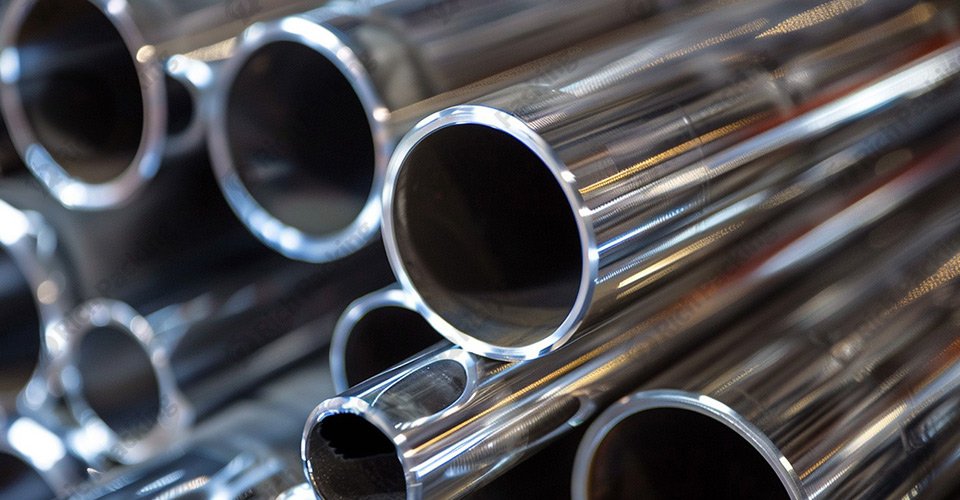
الفولاذ المقاوم للصدأ الأوستنيتي: يتكون بشكل أساسي من سبائك الكروم والنيكل، مع مقاومة جيدة للتآكل وقابلية المعالجة، ويستخدم على نطاق واسع في حاويات المعدات الصيدلانية وخطوط الأنابيب وصمامات المضخات وأجزاء أخرى.
الفولاذ المقاوم للصدأ الفريتي: يحتوي على نسبة عالية من الكروم، وله مقاومة جيدة للتآكل ومقاومة للأكسدة في درجات الحرارة العالية، ولكن الخصائص الميكانيكية منخفضة نسبيًا، ومناسب لبعض المناسبات ذات متطلبات القوة المنخفضة.
الفولاذ المقاوم للصدأ المارتنسيتي: يمكن الحصول على قوة وصلابة عالية من خلال المعالجة الحرارية، ولكن مقاومة التآكل ضعيفة نسبيًا، وغالبًا ما تستخدم في أدوات القطع والأدوات الطبية وما إلى ذلك.
الفولاذ المقاوم للصدأ دوبلكس: مزيج من هيكل ثنائي الطور من الأوستنيتي والفيرايت، مع خصائص ميكانيكية ممتازة ومقاومة للتآكل، ومناسبة بشكل خاص للبيئات عالية التآكل.
تصلب الفولاذ المقاوم للصدأ بالترسيب: عن طريق إضافة النحاس والألومنيوم وعناصر أخرى، وبعد المعالجة الحرارية المحددة، للحصول على قوة عالية ومقاومة جيدة للتآكل، ومناسبة للتصنيع الدقيق الراقية.
وصف الطريقة: استُخدمت الخواص المغناطيسية للفولاذ المقاوم للصدأ لتحديد هويته. عادةً ما يكون الفولاذ المقاوم للصدأ الأوستنيتي (مثل 304 و316) غير مغناطيسي أو ضعيف المغناطيسية لاحتوائه على نسبة عالية من عنصر النيكل؛ بينما يتميز الفولاذ المقاوم للصدأ الفريتي والفولاذ المقاوم للصدأ المارتنسيتي بخواص مغناطيسية قوية. يمكن تحديد نوع الفولاذ المقاوم للصدأ مبدئيًا عن طريق لمس المادة المراد اختبارها برفق بمغناطيس ومراقبة امتصاصها.
مثال على الوصف: امسك مغناطيسًا صغيرًا ولمس أجزاء مختلفة من المعدات الصيدلانية، مثل خزانات تخزين السوائل (معظمها من الفولاذ المقاوم للصدأ الأوستنيتي) وبعض المثبتات (ربما الفولاذ المقاوم للصدأ الفريتي أو المارتنسيتي)، ولاحظ رد فعل المغناطيس.
المميزات والعيوب: تعتبر هذه الطريقة بسيطة ومنخفضة التكلفة، ولكنها مناسبة فقط للتمييز بين الأوستينيت وأنواع أخرى من الفولاذ المقاوم للصدأ، ولا يمكنها التمييز بين درجات محددة.

2. تحديد الشرارة
وصف الطريقة: يُقيَّم نوع الفولاذ المقاوم للصدأ بناءً على شكل ولون وكمية الشرارة الناتجة عن احتكاك عجلة الطحن الدوارة عالية السرعة أو رأس الطحن بسطح الفولاذ المقاوم للصدأ. يختلف الفولاذ المقاوم للصدأ اختلافًا واضحًا في خصائص الشرارة باختلاف تركيبه وبنيته.
مثال على الوصف: في بيئة الاختبار المهنية، يستخدم المشغل مولد الشرارة لإجراء اختبار الشرارة على أجزاء المواد المختلفة للمعدات الصيدلانية، ويحدد نوع المادة عن طريق مقارنة خريطة الشرارة القياسية.
المميزات والعيوب: إن طريقة التعرف على الشرارة بديهية وتجريبية، ولكنها تتطلب خبرة عملية غنية ومعرفة بخريطة الشرارة، ولها متطلبات معينة على المعدات، وهي غير مناسبة للكشف السريع في الميدان.
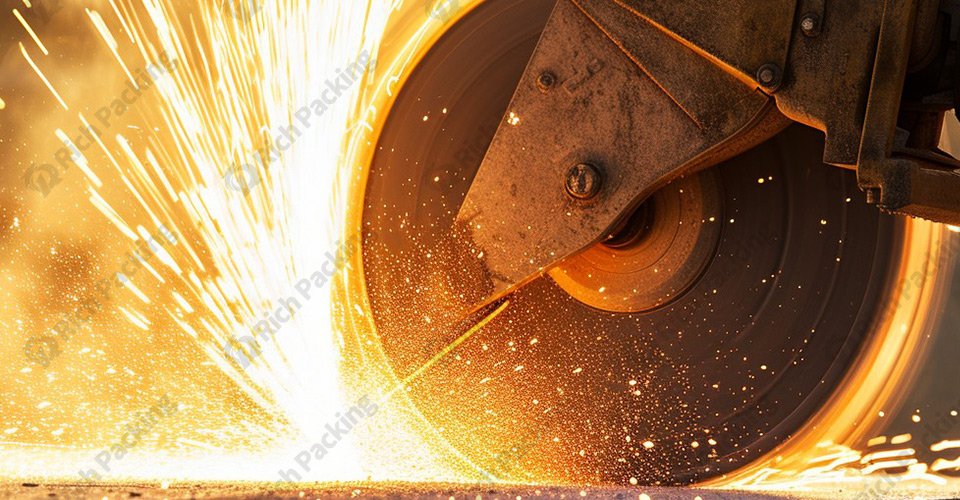
3. طريقة الكاشف الكيميائي
وصف الطريقة: يُقيَّم التركيب الكيميائي للفولاذ المقاوم للصدأ من خلال التفاعل الكيميائي بين الكاشف الكيميائي وسطح الفولاذ المقاوم للصدأ، وذلك من خلال ظاهرة تغير اللون أو الترسيب. من الكواشف الشائعة الاستخدام محلول نترات الفضة ومحلول كبريتات النحاس، وغيرها، والتي تتفاعل مع عناصر محددة في الفولاذ المقاوم للصدأ لتكوين ظواهر ملحوظة.
مثال على الوصف: في ظل ظروف المختبر، يتم أخذ كمية صغيرة من عينة الفولاذ المقاوم للصدأ المراد قياسها، وإسقاط كمية مناسبة من محلول نترات الفضة، وملاحظة ما إذا كان هناك ترسب أبيض (تفاعل المرآة الفضية)، وذلك لتحديد ما إذا كانت العينة تحتوي على النيكل، وبالتالي استنتاج بشكل غير مباشر ما إذا كان من الفولاذ المقاوم للصدأ الأوستنيتي.
المميزات والعيوب: تتميز طريقة الكاشف الكيميائي بدقة عالية ويمكنها تحليل التركيب الكيميائي للفولاذ المقاوم للصدأ كميًا، ولكن عملية التشغيل معقدة نسبيًا وتتطلب استخدام الكواشف الكيميائية، مما ينطوي على مخاطر أمنية معينة.
في صناعة الأدوية، انتشر استخدام الفولاذ المقاوم للصدأ في جميع مراحل الإنتاج تقريبًا، وأصبح مادةً أساسيةً لا غنى عنها في المعدات الدوائية. بدءًا من تخزين ومعالجة المواد الخام، مرورًا بتصنيع الأدوية وتنقيتها، وصولًا إلى التعبئة والتغليف النهائيين، يضمن الفولاذ المقاوم للصدأ، بمزاياه الفريدة في الأداء، أن عملية إنتاج الأدوية بأكملها تلبي أعلى معايير الصحة والسلامة والجودة.
نظام تخزين ونقل المواد الخام: غالبًا ما تكون للمواد الخام الدوائية متطلبات صارمة لبيئة التخزين، وخزانات التخزين وخطوط الأنابيب المصنوعة من الفولاذ المقاوم للصدأ بسبب مقاومتها الممتازة للتآكل وإحكامها، يمكنها منع تلوث المواد الخام بشكل فعال والحفاظ على نقائها واستقرارها.
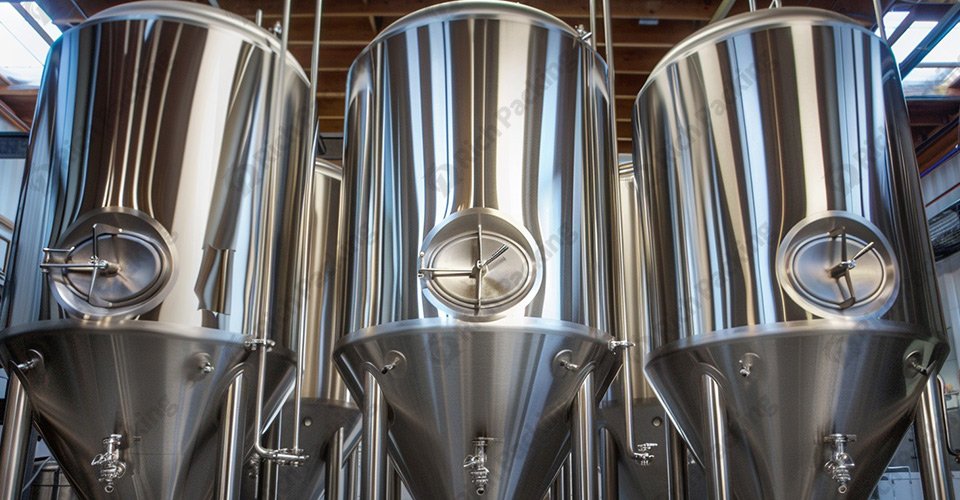
معدات التفاعل والتخليق: في عملية تخليق الدواء، يلزم استخدام مجموعة متنوعة من غلايات التفاعل والمُحركات وغيرها من المعدات. مادة الفولاذ المقاوم للصدأ لا تتحمل درجات الحرارة والضغط العاليين فحسب، بل تقاوم أيضًا تآكل المواد المسببة للتآكل، مما يضمن سير عملية التفاعل بسلاسة.
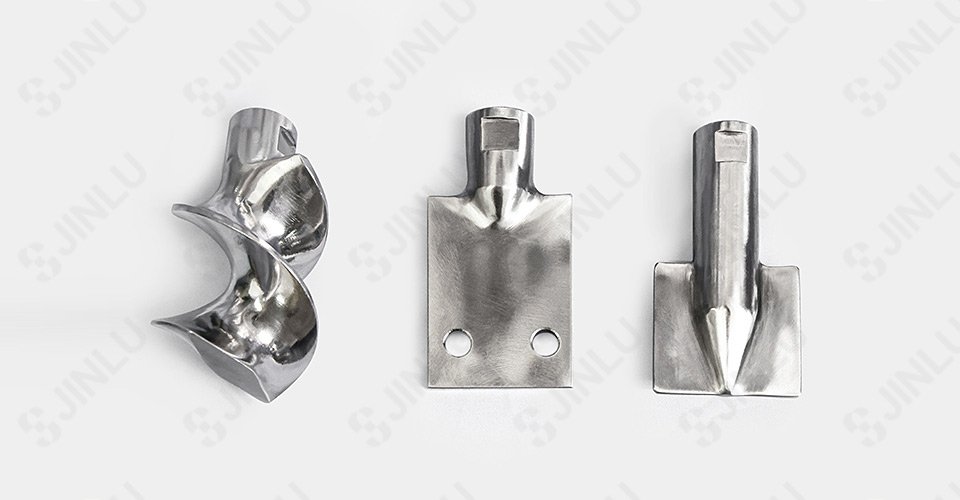
معدات الترشيح والفصل: في عملية المستحضرات الصيدلانية غالبا ما تحتاج إلى تصفية وفصل السائل أو الغاز، ومرشحات الفولاذ المقاوم للصدأ، وأجهزة الطرد المركزي وغيرها من المعدات بسبب خصائصها الميكانيكية الجيدة وخصائصها سهلة التنظيف، تصبح الخيار الأول.
خط إنتاج التعبئة والتغليف: في مرحلة تعبئة وتغليف الأدوية، آلة تعبئة كبسولات من الفولاذ المقاوم للصدأ يمكن لآلات التعبئة والتغليف وخطوط النقل والمعدات الأخرى ضمان تعبئة الأدوية في بيئة معقمة وخالية من الغبار، وحماية الأدوية من التلوث الخارجي.
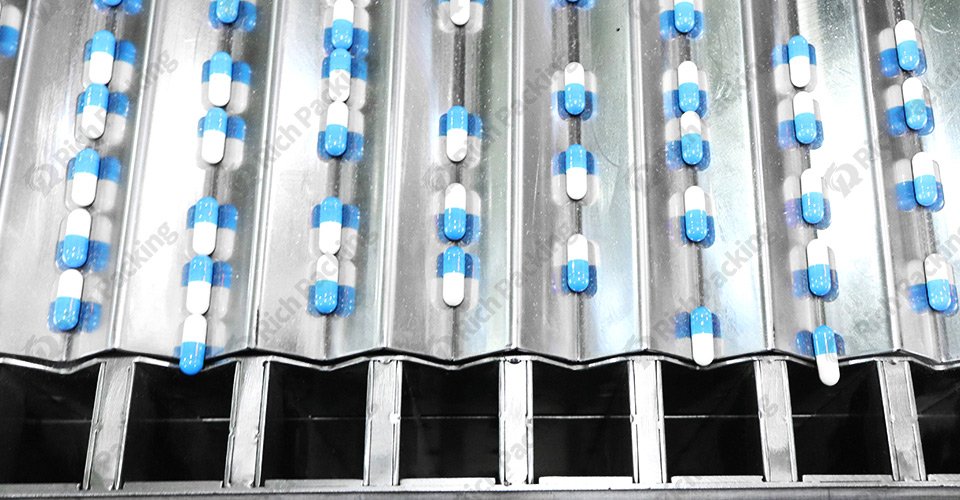
في المجال الدوائي الدولي، يعتمد استخدام الفولاذ المقاوم للصدأ كمادة رئيسية للمعدات الصيدلانية بشكل أساسي على الأسباب والمزايا التالية:
مقاومة عالية للتآكل: تدخل أنواع عديدة من المواد الكيميائية في العمليات الدوائية، وكثير منها مُسبب للتآكل. يتميز الفولاذ المقاوم للصدأ بمقاومة تآكل هذه المواد بفعالية، مما يضمن التشغيل المستقر طويل الأمد للمعدات.
النظافة الجيدة: السطح المصنوع من الفولاذ المقاوم للصدأ أملس، وليس من السهل تراكم الأوساخ والبكتيريا، وسهل التنظيف والتطهير، بما يتماشى مع المتطلبات الصارمة لصناعة الأدوية للظروف الصحية.
خصائص ميكانيكية ممتازة: يتميز الفولاذ المقاوم للصدأ بقوة وصلابة عالية، ويمكنه تحمل الضغوط الميكانيكية المختلفة التي قد تتولد في العملية الدوائية، مما يضمن سلامة الهيكل وعمر الخدمة للمعدات.
تمشيا مع المعايير الدولية: هناك معايير وأنظمة دولية صارمة لمواد المعدات الصيدلانية، والفولاذ المقاوم للصدأ بسبب أدائه الممتاز ومجموعة واسعة من أساس التطبيق، تم إدراجه كمادة موصى بها أو ضرورية للمعدات الصيدلانية من قبل العديد من المنظمات والبلدان الدولية.
في صناعة الأدوية، من المهم ضمان استيفاء مواد المعدات للمعايير ذات الصلة. فيما يلي بعض المعايير الدولية والوطنية المتعلقة باستخدام الفولاذ المقاوم للصدأ في المعدات الدوائية:
3أ المعايير الصحية: صُممت منظمة المعايير الصحية 3A الأمريكية لضمان نظافة وسلامة المعدات والمكونات التي تلامس الأغذية والمشروبات والأدوية. ويلعب الفولاذ المقاوم للصدأ دورًا هامًا في معيار 3A نظرًا لسهولة تنظيفه وتطهيره.
ممارسات التصنيع الجيدة (GMP): على الرغم من أن ممارسات التصنيع الجيدة (GMP) بحد ذاتها لا تحدد معايير المواد بشكل مباشر، إلا أنها تشترط استيفاء المعدات الصيدلانية لمتطلبات الصحة والسلامة ومراقبة الجودة. ويُعتبر الفولاذ المقاوم للصدأ على نطاق واسع من أكثر المواد امتثالاً لممارسات التصنيع الجيدة (GMP) بفضل أدائه الممتاز.
باختصار، يُعدّ الفولاذ المقاوم للصدأ من المواد الأساسية في مجال المعدات الصيدلانية، ويرتبط اختيار وتطبيق طريقة تحديده ارتباطًا مباشرًا بسلامة وكفاءة إنتاج المعدات. ومن خلال أساليب عملية، مثل الاختبار المغناطيسي، وتحديد الشرر، وطريقة الكواشف الكيميائية، يُمكن تحديد الفولاذ المقاوم للصدأ بفعالية واختيار المواد المناسبة لمختلف أجزاء المعدات الصيدلانية وفقًا لخصائصه. وفي المستقبل، ومع تقدم العلوم والتكنولوجيا وابتكار العمليات، سيتوسع مجال استخدام الفولاذ المقاوم للصدأ، مما يُوفر دعمًا قويًا للتنمية المستدامة لصناعة الأدوية.